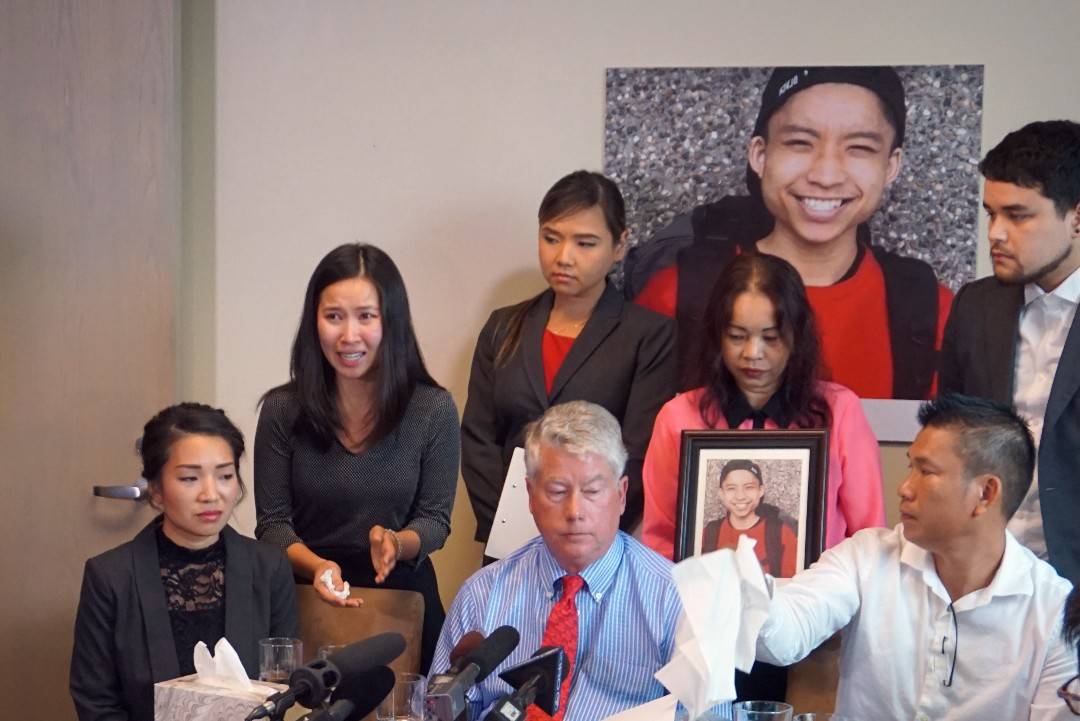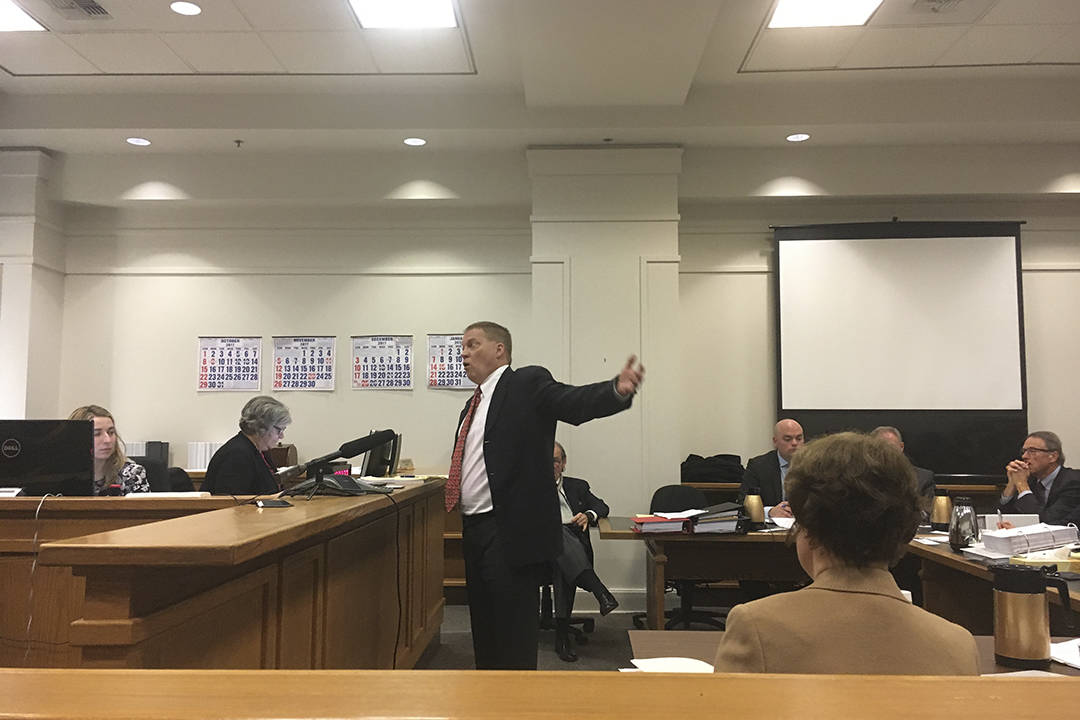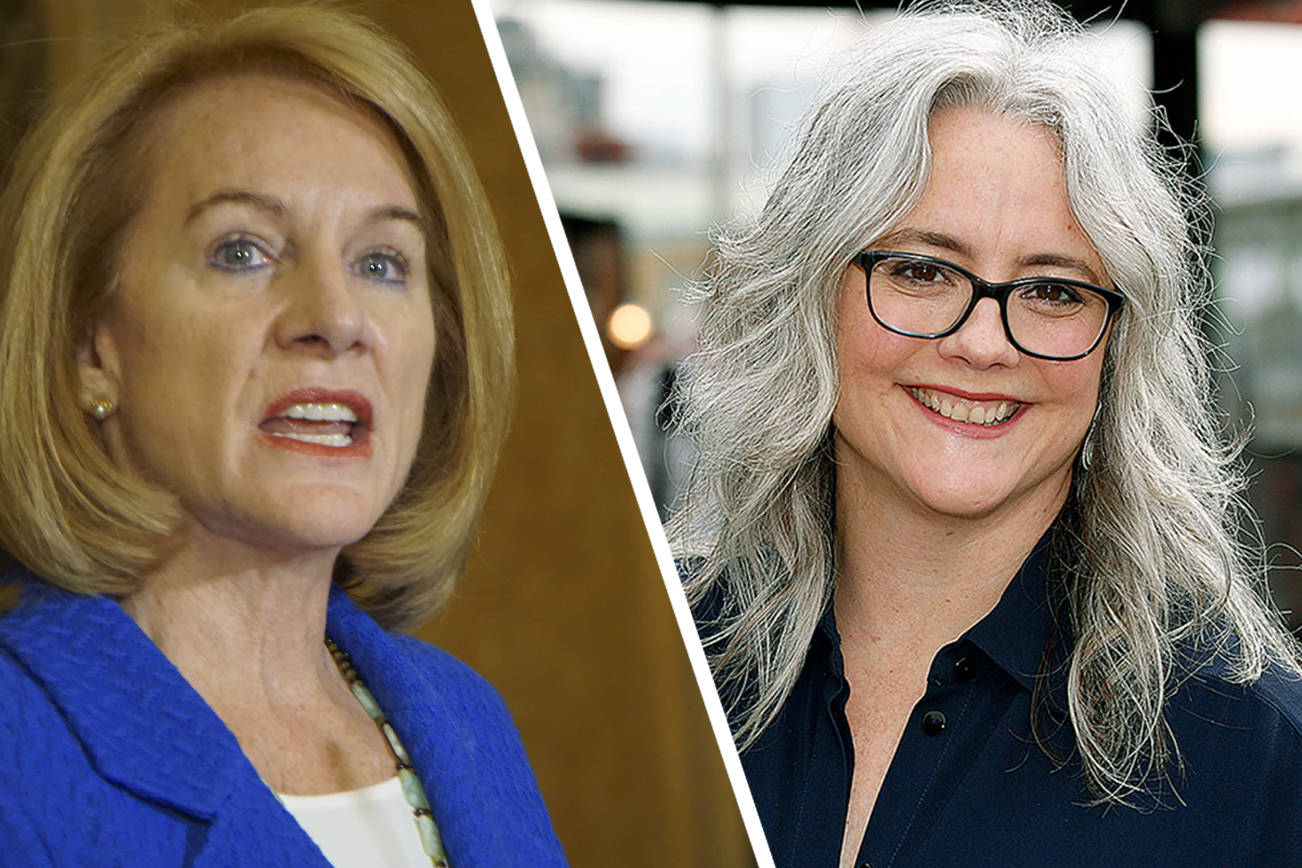ur story begins on lower Capitol Hill. At Melrose between Pike and Pine, a young woman is exhibiting the universal body language of a woman enjoying a cigarette. Her right upper arm is held tight against her torso, and her left grips the other bicep as if bracing against a cold wind, leaving only her right arm below the elbow free to bring her cigarette to and from her mouth, a perfect lever. The wrist is cocked outward to its fullest extent; the white stick is ensconced between the middle and index fingers. But there’s something wrong: Her cigarette isn’t lit, and her hand dangles it as idly as a construction crane dangles a steel beam on a Sunday afternoon.
She asks me for a light.
I wish I could give her one. Not because I’m a creepy dude trolling for hipster chicks. I’m happily married, thank you very much. But ever since Glenn Ford lit Rita Hayworth’s cigarette in Gilda, offering a dame a light has been a quintessential part of the American male experience.
Alas, I don’t have a lighter, because I don’t smoke. It says so right on my Obamacare application, wherever in the ether of the Washington Healthplanfinder that thing ended up after I shipped it through the online portal. Under the Affordable Care Act, the three things insurance companies can use to jack up your rates are your age, where you live, and your tobacco use. In other words, by the law of the land, the three things that make you an official liability to the nation’s health are getting old, lighting up, and living in a place like Tacoma. (Seriously: Washington health insurers have divided the state into five sections to set regional premiums, the highest of which are seen in Region 2, which includes Tacoma, the Olympic Peninsula and the three counties north of Seattle.) Were I paranoid, I’d imagine that President Obama’s minions were compiling this data for an eventual forced march of all the nation’s smokers into a FEMA concentration camp for re-education. (I’d also probably have a lighter handy, prepared as I would be to survive the failure of the power grid.) But I’m not a conspiracy theorist or a member of the Tea Party. I’m a regular old Seattle progressive, freely enjoying an afternoon on Capitol Hill, bastion of liberalism.
I offer the woman my sincere apologies and continue on my way. I haven’t reached the end of the block before I hear her squeal with delight: The next passerby does have a lighter. She will have her nicotine that day.
There is nothing truly notable about this interaction, and yet the incident lingers, like stale cigarette smoke. As a journalist, I’m always looking for breaking stories, trying to find news that will be, well, new to my readers. But the story of smoking in 2015 intrigues me for almost the exact opposite reason: the very lack of news about it.
The first warning from the Surgeon General that smoking causes cancer came out in January 1964. Think about it: John F. Kennedy hadn’t been dead two months yet; the Beatles hadn’t played a single show on American soil; Maggie Smith, the actress best known for playing the Dowager Countess of Grantham on Downton Abbey, was still a hot 20-something playing Desdemona opposite Laurence Olivier. Since then, smoking has been banned in diners, bars, bowling centers (the law points this one out specifically, Walter), beatnik coffee shops, and anywhere within 25 feet of the swinging glass doors of said establishments. Lawmakers load taxes onto packs of cigs as if they were beaten mules at the Grand Canyon. Smoking is so verboten on network TV that NBC doesn’t allow the creators of Constantine to show their title character smoking, though it’s an important plot point for a character who is dying of lung cancer. (As others have noted, this is the same network that gave a cannibal his own show.) Still, cigarette companies somehow find ways to spend billions in advertising despite not being able to flash their wares anywhere but checkout counters and print publications like this one.
In the past year, in particular, smoking was been pilloried like a wobbly-legged prize fighter in the 10th round. Legislators are throwing the punches, the most recent cigarette-smothering hit coming from City Councilmember Jean Godden, who is calling for a smoking ban in all city parks, noting that “second-hand smoke runs counter to the way parks are meant to be enjoyed.” Whatever that means.
And yet smoking remains an undeniable part of Americana, a white-noise buzz of Bic clicks that soundtracks our lives—in particular our night lives.
I’m not trying to feign naivete on the realities of tobacco advertising or the brutal addictiveness of nicotine. It’s worse than heroin, they say, and tobacco companies spend $23 million a day marketing it.
But the fact remains that a full half-century ago, when the phrase “find your health-care plan on our easy-to-use online portal” would have sounded like pure science fiction, the carcinogenic qualities of nicotine were scientific fact.
Granted, smoking rates have dropped since 1964—the Surgeon General last year said smoking rates among adults and teens “are less than half what they were in 1964.” While that’s great to hear, the number is sort of underwhelming. What if the Environmental Protection Agency were to issue a report that stated: “Since discovering that DDT was killing all our nation’s bald eagles, the number of farms using the pesticide has dropped to less than half of what they were in 1964”? That wouldn’t be considered progress. Forty-two million American adults still admit to being smokers—to say nothing of all those social smokers in denial about how often they’re being social. You know who you are.
And anyway, most of those smoking-rate decreases were realized a while ago, before George W. Bush had even taken office. In 1965, 42.4 percent of Americans smoked, according to the CDC. In 1999, 23.5 percent did. But in the past 15 years, those figures have all but flatlined, wavering around 20 percent and even increasing in a couple of those years before dipping to 18 percent last year.
That these statistics today coexist in a health-conscious universe with the phrases “gluten-free pizza,” “vegan cheese,” and “Joe Rogan kale shake” brings us into the realm of the absurd. Had I hung a left at Pike after being asked for a light and walked a mile, I would have quickly passed five yoga studios—two of the hot variety, three where they leave the thermostat alone.
Gene Balk, the Seattle Times librarian whose column reminds us we’re all just data points in this crazy world, crunched some numbers recently that, by my reading, would suggest that in Seattle, neighborhoods populated with people who are finicky about where their quinoa is sourced have lower smoking rates—that Lululemon and Camel Lights are mutually exclusive items on the shopping list. Northeast Seattle— Maple Leaf, Sandpoint, Mayberry, etc.—shows a smoking rate of 8 percent. Cigs there might be the only thing less popular than Congress. Lower on the economic ladder, the area stretching from South Park to White Center, on the other hand, has a rate of 30 percent.
Indeed, in general, smoking is something rich people don’t do. While 30 percent of people living below the poverty line smoke, those living above smoke at half that rate. Only 5 percent of people with graduate degrees smoke; a quarter of Americans who don’t have a high-school diploma do (strangely, people with GEDs are by far the heaviest smokers, coughing in at 40 percent). Remember, the only crime Eric Garner was accused of committing when he was choked to death by a New York City police officer last summer was selling untaxed cigarettes. They truly are a poor man’s burden.
But I submit there’s a glitch in the data that doesn’t reflect the most visible and fascinating aspect of smoking in America today, that nexus in which affluent whites and bohemian culture still mix in a whirlpool of nicotine. I say the data doesn’t reflect it because where this dynamic is most keenly felt is Capitol Hill, which—lumped in with Eastlake—boasts a low-low smoking rate of 13 percent. I call bullshit.
Take a stroll around Capitol Hill—down Broadway, left to Cal Anderson Park, over to Pike, and around again—and you will see that the very soul of the neighborhood still has the habit.
In the vestiges of old Capitol Hill culture, one can see smoking still practiced with reliable regularity. There, at the Americana Restaurant on Broadway, is a silhouetted logo of a woman in the Audrey-Hepburnesque thrall of nicotine; at Seattle Central Community College, nine smokers huddle; at Cal Anderson Park, two separate groups of exactly six; at R Place, two men staying close to the door, definitely not 25 feet away. All throughout, playing walk-on parts in my hazy production, are men and women dressed black-on-black marching with a purpose to stage right. Thirteen percent?
I walk into a smoke shop on Broadway. A customer is at the counter, telling the clerk how he didn’t usually smoke but was splurging on a pouch of roll-your-own American Spirit. He then asks the clerk where he’s from. When he hears Pakistan, he tells him about his friend from India. The clerk is understandably underwhelmed by the revelation that this guy knows one of the 1.25 billion people from that country. Anyway, when I finally get to the counter, Snickers bar in hand, I casually bring up smoking on Capitol Hill.
I quote him the 13 percent figure. “Bullshit,” he replies. “Who said that?” I tell him it was in the paper. “How many smoke shops do you see just in this neighborhood?” he demands. I shrug. “Five! Who’s buying those cigarettes? No. I’d say 25 to 28 percent of this neighborhood smokes.”
His strangely precise estimate of smoking rates aside, the truths of his assertion seem self-evident.
Again, I recognize that smoking rates ain’t what they used to be. Just as Seattle produces those eerie, silent street corners where nobody is talking and all the hybrid cars pass through the lights making nary a sound, so too are there times on Capitol Hill when the air is completely scentless, bereft of the salty tang of the Sound or the smoke from a cigarette. That’s great (I guess). But there seems to be no denying that to whatever extent Capitol Hill remains the soul of Seattle, that soul gazes down upon the Amazon campus with a mournful drag on an American Spirit.
Ah, Amazon. To this point I’ve been willfully ignoring the glaring possibility that all the incongruities of Capitol Hill—the smokers and the yoga studios, the smoke shops and the juice bars—are due not to a single population of residents simultaneously destroying their lungs and their belly fat, but are further evidence of the kaleidoscopic effect of South Lake Union’s vibe slowly infiltrating Capitol Hill. That is, there are now two overlapping neighborhoods—one full of high-paid tech workers who have crunched the numbers and found that the data just doesn’t support a smoking habit, and another bohemian one still committed to the intangible and transient feel of a hot fire in the lungs. That Capitol Hill is being gentrified seems beyond debate, but how it pertains to smoking is anecdotal. In my research, I couldn’t find good data on smoking rates in the tech industry—beyond a recent Wired article decrying the health effects of sitting too long, declaring that “sitting is [Silicon Valley’s] new smoking.” (Picture if you will a modern-day James Dean sitting in a tech office, clad in leather, playing the defiant rebel by refusing to opt for a stand-up work station.) But if the smoking habits of “New Capitol Hill” are difficult to nail down, the habits of the old neighborhood are slightly more tangible.
At least one hard statistic bears out why smoking might seem more prevalent in the cultural heart of Seattle—the “gayborhood,” if you will: Smoking rates in the LGBT community are significantly higher than in the general population. In Washington state, 38.1 percent of bisexual men smoke, compared to 19.2 percent of the general population; 29.5 percent of gay men regularly light up. The rates are similar for gay and bisexual women. If you’re a gay youth, there’s a 6-in-10 chance you’re a smoker, which far exceeds the rates seen in 1964 even for the general population. Researchers suggest that the reason for this is because in smoking, people who have been stigmatized all their lives can find a community; when you’re driven out of your home and into bars, a cigarette offered from a friendly hand can seem awfully enticing. The American Lung Association—the source of all these statistics—reports that interviews with 74 LBGT leaders revealed a prevailing attitude that smoking was important to the coming-out process and smoking was one of the last things they were going to worry about. I don’t necessarily blame them.
Smoking also clearly has a still-strong cultural currency among the artistic class. Nobody bothers gathering statistics on how many rock stars or actors smoke, but it’s not difficult to grasp that the percentages are high.
I submit to you a lineup of recent publicity shots. Enter “Rihanna” into Google Images and the second result shows her defiantly awash in smoke, and the cherry of her cigarette is far too uniform to comprise anything but tobacco. Then there’s Adam Driver, the coolest Brooklyn dude on Girls and therefore the coolest dude on TV, staring down the camera with a cigarette dangling from his mouth. Tyler the Creator just got his own online TV show, and to announce it his people sent out a new shot of the rapper with a smoke in his lips. The cigarette was backwards, because Tyler the Creator is different, but the effect still comes through. Mac DeMarco, the rocker so cool right now that in January he was able to sell a pair of his old shoes for $21,100, has made cigarettes central to his artistic aesthetic; when he came by Bumbershoot in August, the photo all the papers—including this one—ran was of him with a gee-whiz grin on his face as cigarettes rained down around him.
Maybe cigarettes are becoming ironic.
Maybe all these people are in on the absurdity, telling a sort of dead-baby joke 20 smokes at a time.
I doubt it, though.
Here’s the thing: Smoking has a gravity-defying ability to remain a red-flag indicator of antiauthoritarianism. While tobacco companies are seeing steadily declining sales, their executives must pinch themselves when they realize that in a world where everything from Stoli Vodka to SeaWorld is finding itself under mass boycott, lighting a cigarette is still viewed as a fuck-you to The Man. No matter that they literally use child labor in their tobacco fields. In the United States. In the 21st century. (Human Rights Watch blew the whistle on the practice last May.) Everybody still knows that smoking ain’t allowed in school, so, ipso facto, light up, street punks.
A friend of mine contends that unhealthy behaviors—of which smoking is the granddaddy—are America’s final sin. Sex has been digitized via online porn, greed codified though tax laws that ensure we keep what’s ours, and murder ghettoized to a poor man’s problem—be it at the hands of their neighbors or the cops. But cigarettes: There’s a temptation that continues to lurk just around the corner of every yoga studio and kale bar that, if indulged in, would ensure the fall of man. Were the Adam and Eve story set on Capitol Hill today, Eve wouldn’t be holding an apple—who wouldn’t want a locally sourced piece of hand-picked fruit?—but a pack of organically grown American Spirits.
While it’s just a theory, it would explain why rock stars and those who would emulate them insist a cigarette be in their hand when it’s time for their head shot. So Kate Moss walks down the runway at Paris Fashion Week puffing on a cig and Leonardo DiCaprio flaunts his e-cig inside the auditorium during the Golden Globes. They’re just partaking in the one last thing that will indicate they aren’t a sellout or a sissy.
Health officials have all but accepted that that health-based arguments against smoking, while effective in cutting the smoking rate drastically over the past 40 years, have become less effective as they run into the stubborn final 20 percent.
“For years and years the message was ‘Don’t smoke, don’t smoke, don’t smoke,’ ” Allison Moroni, the lung health manager in the American Lung Association’s Seattle office, tells me about her group’s efforts to keep kids from picking up the habit. “After a while, the progress started to taper off; smoking rates [among teens] declined and then plateaued.”
That’s a problem for the anti-smoking crowd, Moroni says, since 90 percent of all smokers start in their teens. So about 10 years ago groups like the American Lung Association shifted tactics and began to promote legislation that would make it harder for teenagers to get cigarettes and smoke them, no matter how cool it might look when Skrillex lights up. The idea was that if a pack of cigarettes costs more than you make working an hour at Taco Bell, you’ll be a lot less likely to drop money on them.
As reported in this paper last month (“Pack Rats,” March 11), the state cigarette tax has gone up ninefold in two decades. In 1993, it was just 34 cents per pack; today a carton of cigarettes in Washington is taxed $30.25. Along with the intentionally extortionist prices, the Lung Association is also supporting a bill in Olympia that would make it illegal for anyone under 21 to possess tobacco products. The bill has already passed one House committee.
The strategy of making smoking a pain in the ass for teens seemed to be working for a while, Moroni says, but then—riding onto the scene like the Marlboro Man on a futuristic robot steed—came vaping.
When I first saw e-cigarettes hit the market, I expected them to share the fate of Bluetooth earpieces: immediate relegation to that strange underbelly of society where 40-year-old white dudes with bad sunglasses and goatees are king. There’s just no way to look cool dragging off something shaped like a pocket-sized vibrator. Plus, to feed the habit, you have to suffer the indignity of walking into stores with names like Planet Vape, many of which have business signs that appear to have been designed by your cousin in Microsoft Paint. My fiercely unscientific survey of Capitol Hill smoking habits seemed to corroborate this impression, as tobacco seemed to be consumed in the very-much-old-fashioned way.
But our children are the future, and Moroni says the future is vaping. A Monitoring the Future survey of 40,000 teens found that e-cigarette use has surpassed regular cigarette use among minors. Moroni says that her interviews with teens suggest that e-cigarettes allow kids to achieve two of their basic biological functions: rebelling against their parents and hiding it from them (despite their being the object of said rebellion).
“We hear from teens who get great grades and don’t want to be seen as a goody-two-shoes,” she says. “With e-cigarettes, you can smoke them with your friends, but you don’t smell like tobacco when you get home.”
Some theorize that vaping represents progress in the smoking debate. It’s not really even smoke, so the vapor is presumably healthier, since it’s denuded of tar and some of the more potent carcinogens found in regular nicotine cigarettes. But Moroni doesn’t buy it. Not only are vape products frighteningly untested—though not untested enough to miss the fact that in them formaldehyde, ye old embalming agent, exists at levels 15 times that of regular cigarettes—Moroni points out that they get you hooked on nicotine just as effectively. If vaping hooks you, the theory goes, next time you’re offered a cigarette you probably won’t decline.
And, again, tobacco companies (or should they just be called nicotine companies now?) have managed to get these products into the hands of American royalty just in time for the cameras to roll. Along with Leo, Julia Louis-Dreyfus was also vaping at the Golden Globes last year as she awaited her awards for Veep. Getting back to an earlier point: Both actors are dyed-in-the-wool liberals who rail against everything from the Keystone XL Pipeline to killing elephants, but who have a huge blind spot for the tobacco industry’s misdeeds. Hollywood, darling, is all about perception; just as with guns, the entertainment industry may know they’re wrong, but that won’t stop them from using them whenever they need a scene awash in American noir.
Will smoking ever lose that allure? Arthur C. Clarke said of extraterrestrial life: “Two possibilities exist: either we are alone in the Universe or we are not. Both are equally terrifying.” Likewise, either smoking will remain or it will go away. Both seem unbelievable.
At a wedding I attended one recent weekend, held in Lower Fremont, two bridesmaids stepped out after the ceremony to have a cigarette. They go well with wine, I guess. The venue was located right next door to a yoga studio that is all windows, meaning its owner had no trouble seeing what was going on. And in another sign of the changing culture of Seattle, she actually confronted them.
“Could you please not smoke in front of my yoga studio?” the woman asked with just a little bit of tone.
You could take this story to mean that healthniks will eventually win the day, emboldened as they are these days to exert their rights to a smoke-free world. But when the women moved down the street to light up in front of the Carquest auto-parts store next door, an alternative lesson emerged: In 2015, 51 years after the Surgeon General said it would kill you, your next cigarette is just 25 feet away from the public entrance. E
news@seattleweekly.com







